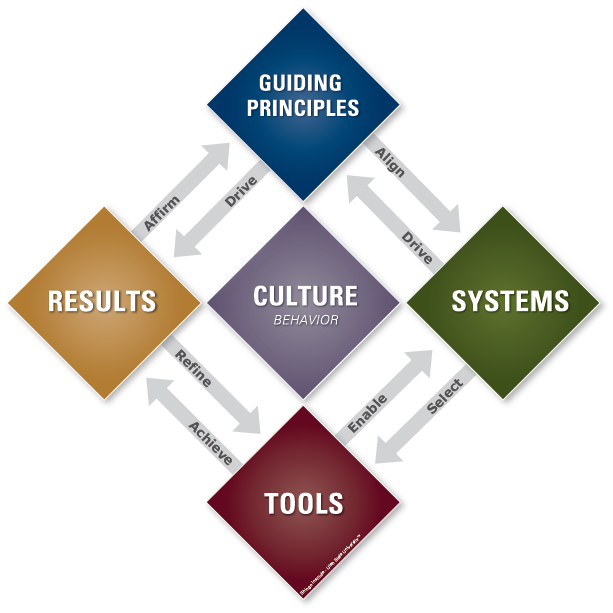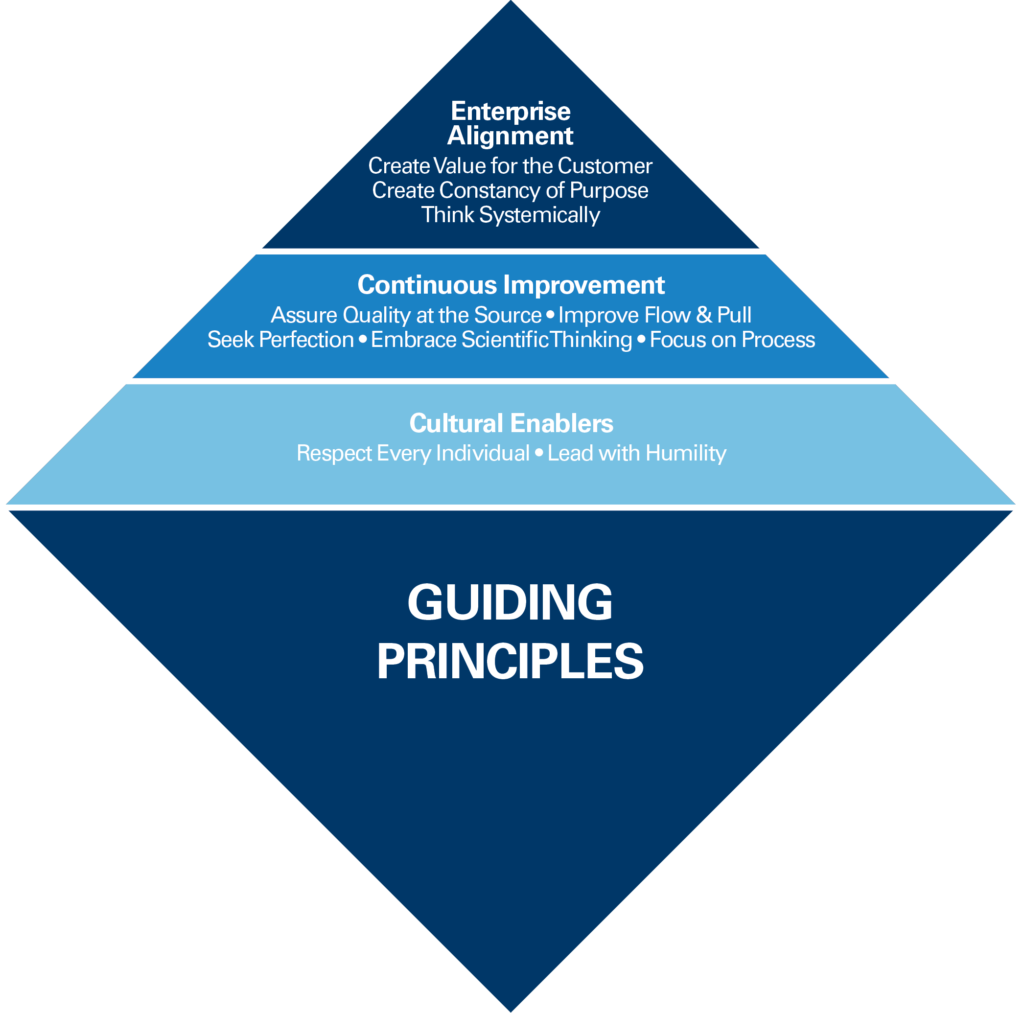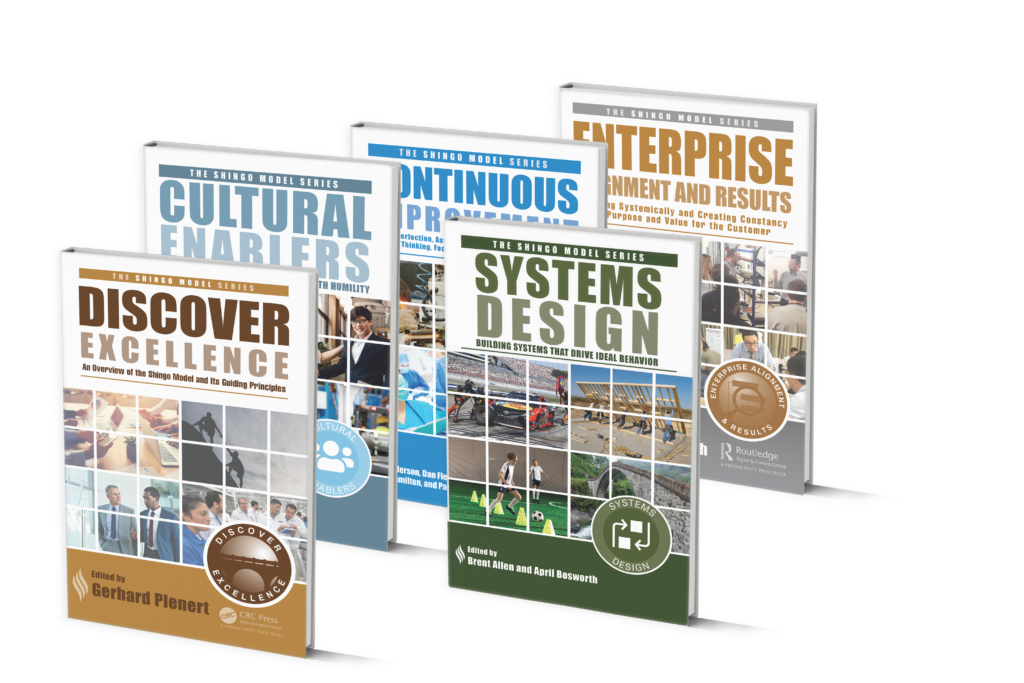Shingo Guiding Principles
Click on each principle for a detailed explanation.
Respect Every Individual
Respect must become something that is deeply felt for and by every person in an organization. Respect for every individual naturally includes respect for customers, suppliers, the community and society in general. Individuals are energized when this type of respect is demonstrated. Most associates will say that to be respected is the most important thing they want from their employment. When people feel respected, they give far more than their hands—they give their minds and hearts as well.
To better understand the principle of respect for every individual simply ask the question “why?” The answer is because we are all human beings with worth and potential. Because this is true, every individual deserves my respect.
Examples of Ideal Behaviors
- Create a development plan for employees including appropriate goals.
- Involve employees in improving the work done in their areas.
- Continually provide coaching for problem solving.
Lead with Humility
One common trait among leading practitioners of enterprise excellence is a sense of humility. Humility is an enabling principle that precedes learning and improvement. A leader’s willingness to seek input, listen carefully and continuously learn creates an environment where associates feel respected and energized and give freely of their creative abilities. Improvement is only possible when people are willing to acknowledge their vulnerability and abandon bias and prejudice in their pursuit of a better way.
Examples of Ideal Behavior
- There is consistent, predictable leadership engagement where the work happens.
- Employees can report issues with confidence in a positive response.
Seek Perfection
Perfection is an aspiration not likely to be achieved but the pursuit of which creates a mindset and culture of continuous improvement. The realization of what is possible is only limited by the paradigms through which we see and understand the world.
Examples of Ideal Behaviors
- Create long-term solutions rather than leave temporary fixes in place.
- Constantly work toward simplifying work.
Embrace Scientific Thinking
Innovation and improvement are the consequence of repeated cycles of experimentation, direct observation and learning. A relentless and systematic exploration of new ideas, including failures, enables us to constantly refine our understanding of reality.
Examples of Ideal Behavior
- Follow a structured approach to solving problems.
- Encourage employees to explore new ideas without fear of failure.
Focus on Process
All outcomes are the consequence of a process. It is nearly impossible for even good people to consistently produce ideal results with a poor process both inside and outside the organization. There is natural tendency to blame the people involved when something goes wrong or is less than ideal, when in reality the vast majority of the time the issue is rooted in an imperfect process, not the people.
Examples of Ideal Behaviors
- When an error occurs, focus on improving the process that created the error.
- Ensure that all parts, materials, information and resources are correct and meet specifications before using them in a process.
Assure Quality at the Source
Perfect quality can only be achieved when every element of work is done right the first time. If an error should occur, it must be detected and corrected at the point and time of its creation.
Examples of Ideal Behaviors
- Organize places of work so potential problems become immediately visible.
- Stop work to fix errors before continuing.
Improve Flow & Pull
Value for customers is maximized when it is created in response to real demand and a continuous and uninterrupted flow. Although one-piece flow is the ideal, often demand is distorted between and within organizations. Waste is anything that disrupts the continuous flow of value.
Examples of Ideal Behavior
- Avoid creating or having more product or services than are necessary to serve customer demand.
- Ensure the resources that are needed are available when required.
Think Systematically
Through understanding the relationships and interconnectedness within a system we are able to make better decisions and improvements.
Examples of Ideal Behaviors
- Eliminate any barrier that prevents the flow of ideas, information, decisions, product, etc.
- Ensure the goals and issues for each day are understood by those who are affected.
Create Constancy of Purpose
An unwavering clarity of why the organization exists, where it is going, and how it will get there enables people to align their actions, as well as to innovate, adapt and take risks with greater confidence.
Examples of Ideal Behaviors
- Clearly communicate the direction and purpose of the organization to all.
- Set goals that are connected to the organization’s overall goals.
Create Value for the Customer
Ultimately, value must be defined through the lens of what a customer wants and is willing to pay for. Organizations that fail to deliver both effectively and efficiently on this most fundamental outcome cannot be sustained over the long-term.
Examples of Ideal Behaviors
- Work to understand customers’ needs and expectations.




